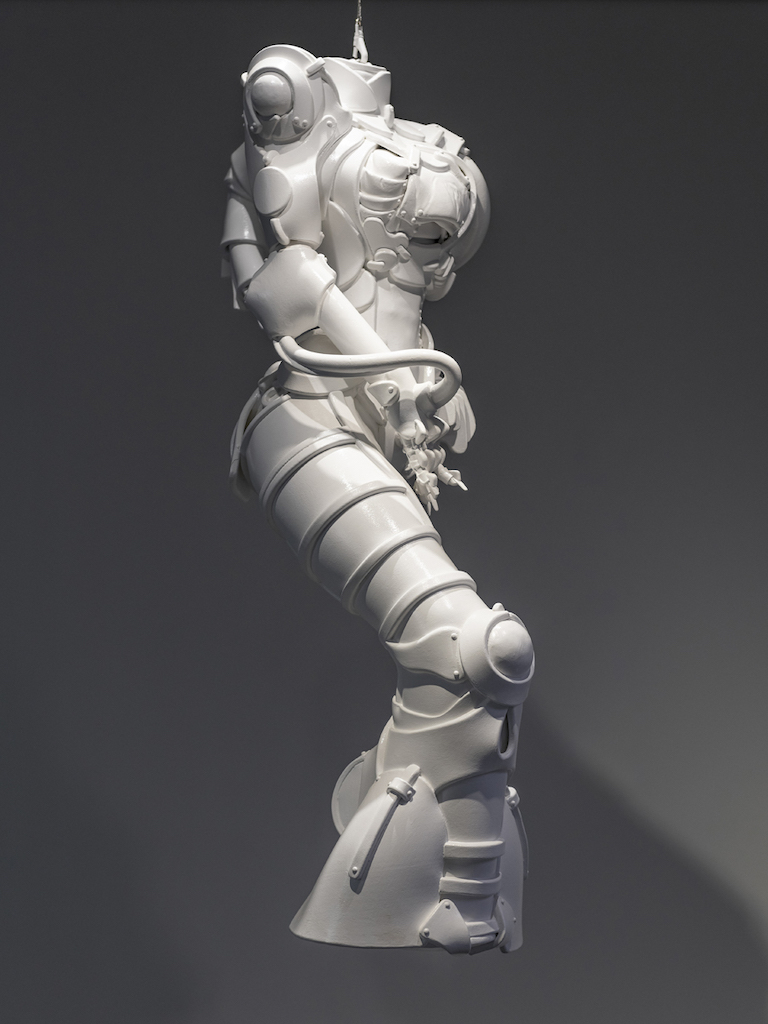“CY-CANDY”: FEMALE BODIES AND CYBORG THEORY IN THE WORKS OF FAN XIAOYAN AND LEE BUL
CONCLUSION
This capstone began with the central goal of surveying depictions of the sexualized female cyborg in East Asian art and how they respond to conventions of display that objectify female bodies for male consumption and enjoyment. Both artists undertook explorations of this cyborg form that could be called “feminist” in intention, yet their sculptures ultimately cannot be considered feminist. Fan Xiaoyan’s Physical Attachment depicts female cyborg bodies in a sexualized and objectifying way which validates, rather than rejects, the male gaze. It presents the female body as an object of visual consumption, reinforcing the presence and power of the male gaze. In addition, Fan Xiaoyan’s series attempts to strengthen the female body, which is considered weak, but the mechanical attachments only serve to hinder, immobilize, and victimize her cyborgs. Lee Bul’s series Cyborg W1-W10 is more ambiguous, yet also potentially unsuccessful in its execution. Her depiction of the female body resists the male gaze more effectively than Fan Xiaoyan’s, as it hyperbolizes and ridicules an erotic mode of viewing, however it cannot be considered straightforwardly feminist. The method of display as hung from the ceiling further complicates the interpretation of this series; while some methods of display that place the sculptures farther away from the viewer can further undermine the erotic consumption of her figures, a close-up presentation subverts this analysis. These works reveal the difficulty of creating a feminist cyborg in the context of contemporary East Asian visual culture, due to the tenacious power of the male gaze, as well as the prevalence of sexualized female bodies in media. Women artists making art about the female body face the seemingly inescapable presence of the male gaze, which is historically entrenched in artistic traditions, and the sexualized female body has not yet been successfully mobilized for a feminist purpose. Therefore, I conclude that thus far there has not been a feminist cyborg in East Asia that problematizes the potential of cyborg feminism in the region, as well as in the larger sphere of the contemporary art world. This capstone’s critical examination of the case studies of Fan Xiaoyan and Lee Bul’s cyborg sculptures unveils the risks and pitfalls of the universality of cyborg feminism, but also opens up promising new avenues for art historical research in the realm of cyborg art.

